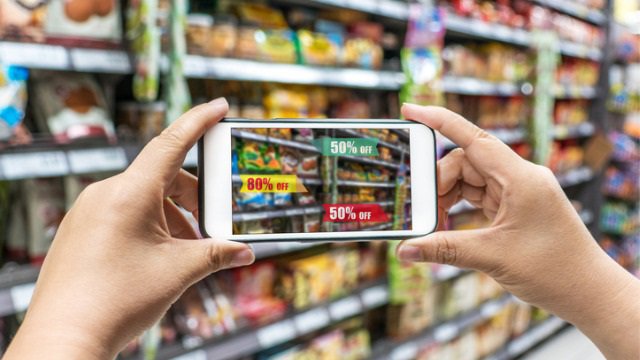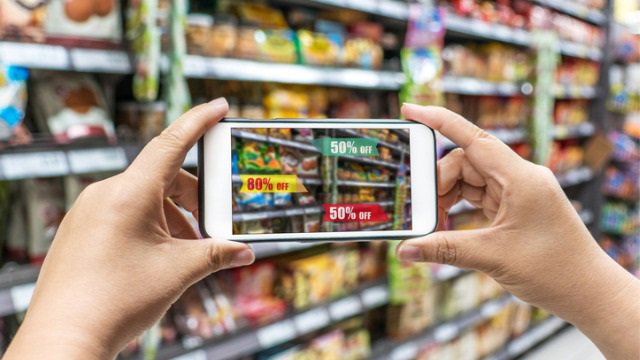Commentary

Photo by iStock.com
By Roger Bannister, business development director, Timico
Traditional brands — from retailers to hotels, from food to beverage establishments — are under increasing pressure to innovate. Technological advances have placed the power squarely in the hands of customers, who now have more options than ever before — and this is leveling the business playing field.
Challenger brands that previously couldn’t compete on size are now focusing on customer-centric business strategies as their business differentiator – which is helping these firms increase sales. By revolutionizing customer service, improving the user experience and making transactions seamless, they are taking market share from older, legacy brands that haven’t yet embraced a fully digital and immersive business model.
To avoid falling by the wayside, established brands must now enhance the user experience, using digital transformation strategies and innovations such as augmented reality and artificial intelligence to improve their offering — a must if they are to remain relevant in the competitive market.
Enhancing the customer experience
Augmented reality has the ability to deepen a customer’s experience, making it truly unique and immersive. With AR, digital information is presented in forms within the environment, so rather than presenting an entirely new and often fictional context (as in VR), it enhances and deepens what the customer is already experiencing — for example, for a hotel stay. An app can let a guest view a hotel’s premises through a phone camera, and then overlay links and images to create an in-app tour of the area, keeping the customer informed of the facilities during every minute of their stay.
This technology can also help retail brands transform a shopping experience and make it immersive for a customer. Using AR can enable clothing brands to project an outfit onto the image of a shopper standing in a shop, allowing them to visualize a potential purchase on the spot. It can also help shoppers preview products in context: a furniture buyer could see how a sofa would look in their living room.
AR is now making its presence in the restaurant trade too, with menus being brought to life. US fast food chain Bareburger, for example, is planning to replace all of its printed menus with 3D visualizations, so that a diner can get a mouth-watering, true-to-life preview of their food before they pick what they order. Now that an example has been set, it won’t be too long before we are seeing visitors scrolling through holographic representations of the food on the menu in restaurants across the world, swiping through the options via their phones and other smart devices.
Sometimes, using tech that can enable a company to simply do the basics well can also help a business deliver on customer satisfaction. McDonald’s self-ordering kiosks help not only speed up queues at busy branches and enable at-table delivery, putting the customer at the heart of the dining experience, but diners can also customise their food options – which is especially crucial for those with dietary requirements or allergies.
Smarter brands, happier customers
AI is also proving to be a game-changer when it comes to revolutionizing the customer experience. One of its most effective uses is providing a true omnichannel service, especially within the lodging sector.
AI powered solutions can learn how to interact with guests and visitors, and analyze their hotel stay behaviors and preferences. It can make recommendations or suggestions based on these insights, furthermore creating a unique experience for guests.
Virtual receptionists installed in hotel reception areas, and interactive bot concierges, are just some examples of how AI is effectively being utilized by hotels. Virtual receptionists can greet customers who have booked their hotel stay through an online account, by name, and even suggest activities and trips to the guests based on their pre-chosen preferences. Bot concierges are increasingly being used too, as ‘chat-bots’, by large companies such as Marriott and Hilton. This enables them to liaise with customers, or potential customers, through automated messenger systems. Some brands are even utilizing Facebook Messenger and WhatsApp, and having them manned by interactive bots, to enable ‘always-on’ customer service — the key to keeping customers happy around the clock.
Implementing technology-powered measures can also empower customers to make their own decisions when booking a hotel or city break, for example. Such systems need to be operated via a mobile phone, and should be available to be called upon every minute of every day at the will of the user — services that are automated and digital means there is no ‘closed period’ on their use. While this is beginning to happen, it is a route the hospitality sector must continue to develop.
Booking.com, Opentable.co.uk, Groupon and other online booking services have become so powerful because they offer choice, and often make the customer feel that they are finding bargains — from last-minute cut-price hotel rooms to cheap menus. Decisions can be made in an instant with the use of a mobile device — which is where hospitality brands must continue to place an emphasis on, as over one third of people now use a mobile device to book a hotel room.
Retailers can also increase customer engagement and help boost sales — and shopper loyalty — by using Artificial Intelligence. This ranges from the simple — using data-driven insights to offer a better customer insight — to the extreme. One example is AI-powered robots, which can interact with customers, like SoftBank in Japan. In 2010, the firm invested in Pepper, a humanoid robot that could interact with shoppers and perceive human emotions. It was then used by a US retailer – which experienced a 98 percent increase in customer interactions, a 20 percent increase in foot traffic and a 300 percent revenue growth as a result.
On the other end of the spectrum, The North Face adopted cognitive computing technology to help website visitors determine which clothing was best for them for a specific situation. The results were based on variables including location and time of year — hiking in Iceland in winter or travelling around Toronto in spring — and gender. Pilot results showed a 60 percent click-through rate and 75 percent total sales conversions.
Digital is the future, with every new generation becoming ever more dependent on it. The opportunity to flourish is here, but only if the sector can rise to the digitalization challenge.
Topics: Assisted Selling, Augmented Reality, Robotics / AI, Technology
Sponsored Links:

